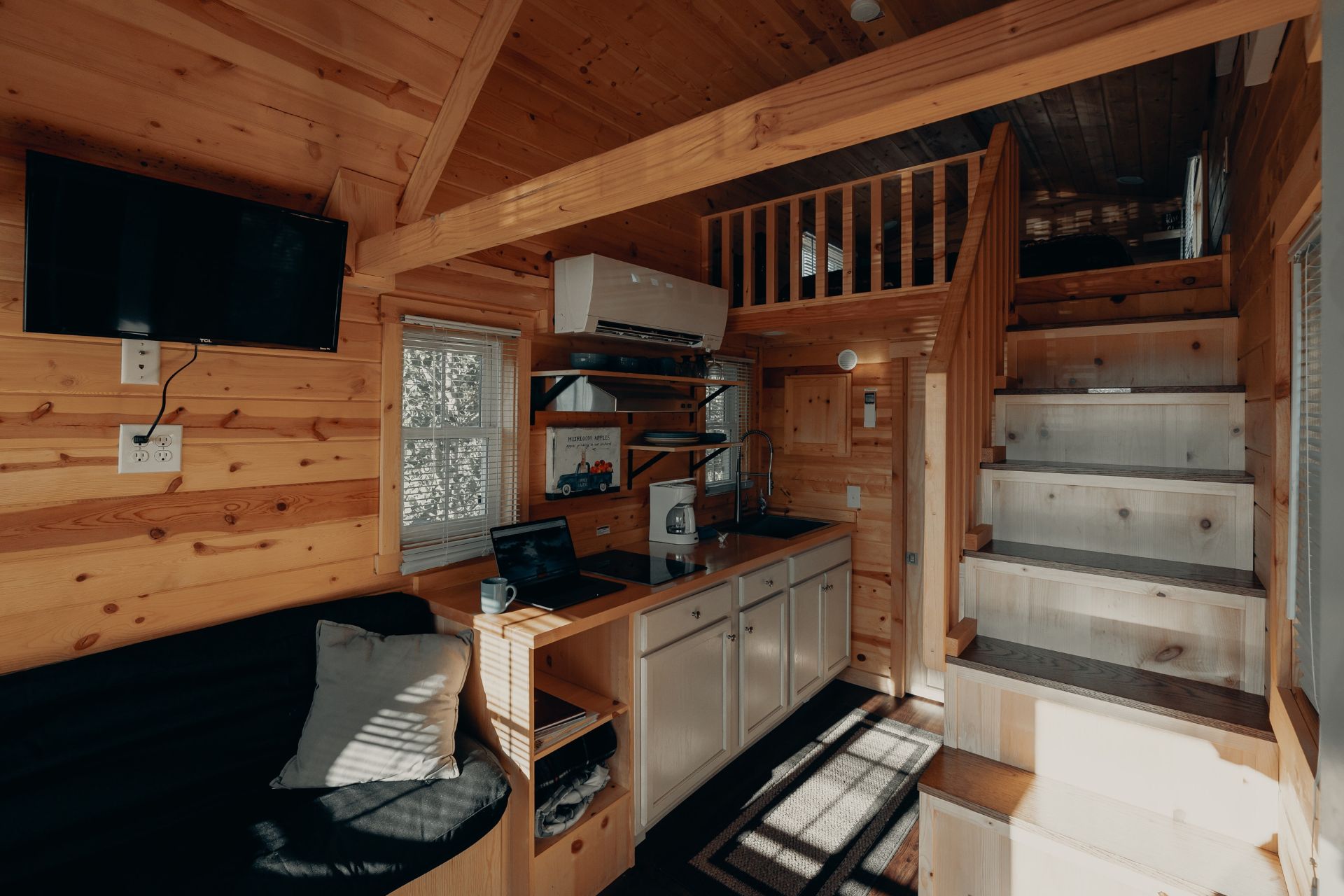
The Pros and Cons of Tiny House Living
We are reader-supported. When you buy through links on our site, we may earn affiliate commission.
One notable trend in the housing market that took off in the ‘90s is tiny house living. Living in a tiny house might work well for some individuals, couples or families, but it could quickly become a nightmare for others.
What is Tiny House Living?
Tiny house living is considered an architectural and social movement that advocates for downsized living. Instead of someone owning a huge house or mansion, the movement encourages people to live in small, often portable, homes.
The maximum size of a tiny home is up to 400 square feet of floor space, excluding any lofts. Tiny homes are sometimes referred to as micro-homes. The ultimate goal of small house living is to get by with as few material things and space as possible.
Pros of Tiny House Living
Various pros come with living a tiny lifestyle. It’s critical for potential homebuyers or those looking to transition to small house living to understand both the pros and cons. Your living situation will impact your life greatly, meaning you should explore the advantages and disadvantages of living in a small space.
1. Saves Money
Because of their small size, tiny homes are often much more affordable than traditional homes. If you go all-out with tiny home living and pay for expensive building materials, adopting this lifestyle could become more costly. According to HomeAdvisor, a small home can cost anywhere from $30,000 to $60,000, much less than a basic house.
Saving money and building a healthy savings account is something many people are trying to achieve right now in the tight economy. The cost of living is skyrocketing, meaning that tiny home living could be the best financial option for you or your family.
2. Reduces Your Carbon Footprint
Tiny homes are very energy-efficient compared to bigger, more expensive homes. Their sheer size leaves a much smaller carbon footprint than their larger counterparts. Many environmental advocates endorse tiny house living, as it helps reduce the negative effects of global warming, which leads to climate change.
In addition, there are plenty of eco-friendly add-ons you can incorporate into a tiny home. For example, you can use sustainable building materials, install various solar products or technologies and take up gardening or homesteading.
3. Less Clutter
There’s significantly less space in tiny homes than in a traditional home, which could make it difficult to store all of your belongings. You might be unable to purchase furniture you like or add certain decor or accents to your tiny home due to limited space.
However, less space also means less clutter, which is a pro of tiny house living. Everything you own must fit into a tiny home or you’ll need to purchase extra storage space somewhere else. Clutter can become a nuisance, so if you hate clutter, tiny house living may suit you well.
4. Customizable
Another pro of tiny house living is that you can essentially design the small home of your dreams in much less time than it would take in a large home or mansion. Tiny homes are highly customizable, allowing you to change the layout in just a few minutes.
However, if you decide to build your tiny home from scratch, you should be completely satisfied with the design of your home. It would take more time and energy and cost more money to make any significant changes, renovations or remodeling projects if you decide to change the interior or exterior of your tiny home. Some companies, like Modern Tiny Living (MTL) in Columbus, Ohio, allow you to customize your dream tiny house to your liking.
4. Portable
You may be surprised to learn that tiny homes are considered portable homes. You can attach a small home — which is best built on a flatbed trailer — to your vehicle and take it with you while you travel.
Owning a tiny mobile home could be a major boon to some homeowners, especially those who find it difficult to choose where they want to live.
Cons of Tiny House Living
Like most living situations, tiny house living also comes with drawbacks. Before diving into tiny house living, you must consider the disadvantages you’ll face. If these cons have a minimal impact on your lifestyle, you know that tiny house living is a feasible option for you and your family.
1. Limited Space
As mentioned above, limited space is a cornerstone of tiny living. For some people, having a lot of space is a critical factor in their living situation. Without enough space, it could be challenging to move around, store belongings or even find time to spend alone.
If you have a big family, tiny home living will not be an enjoyable, comfortable living experience. Tiny house living, as its name suggests, is not meant to provide you with big, open spaces.
2. Hidden Costs
Since tiny homes typically do not have the same amount of insulation as a standard home, the indoor temperature of the house can be volatile, depending on your location. In other words, summers could be very hot, and winters could be freezing. Using a heating or cooling system in your tiny home is a hidden cost that not every homeowner considers before building or buying a tiny house.
You could also incur more expenses if you travel often. Renting space at an RV or campsite could become expensive and connecting critical utilities may increase your costs. Be sure you’re in good financial standing before you live in a tiny home.
3. Depreciate in Value
Unlike traditional homes, tiny houses depreciate. You can have the most luxurious tiny home on the market, but they often drop in resale value over time. It also could be a major challenge to qualify for a loan for a tiny home-building project.
Even if you decide to make critical upgrades or improvements to your tiny home, it might not be enough to bait potential buyers.
4. Not Well-Suited for People With a Disability
Because tiny houses have limited space, they are not well-suited for people with physical disabilities. In tiny home living, you often need to climb ladders or fit into tight spaces, such as a loft or a bathroom, respectively.
While it is possible to design and build a tiny home that accommodates you or a family member with a disability, living comfortably will still be challenging. Additionally, inviting guests with disabilities to your tiny home could prove difficult.
5. Might Not Meet Local Codes or Laws
Although the tiny house trend emerged in the 1990s, many cities and towns have yet to update their codes or laws to include small homes. Not all local building codes legally allow you to live in a tiny home.
If you plan on building a tiny home DIY-style, check into the legality of your area or speak to local officials about your plans. The last thing you want is to create a tiny home, only to find out you cannot reside in it in a specific location.
Consider the Pros and Cons of Tiny House Living
Deciding where to live can be a real struggle. You must think about location, your commute, how close you are to friends and family, the size of the home you need for your family and much more. Tiny house living could be the perfect option for you and your family, but knowing what you’re getting yourself into is crucial. Consider the pros and cons of tiny house living before making significant investments or changes to your living situation.
Share on
Like what you read? Join other Environment.co readers!
Get the latest updates on our planet by subscribing to the Environment.co newsletter!
About the author

Steve Russell
Steve is the Managing Editor of Environment.co and regularly contributes articles related to wildlife, biodiversity, and recycling. His passions include wildlife photography and bird watching.





